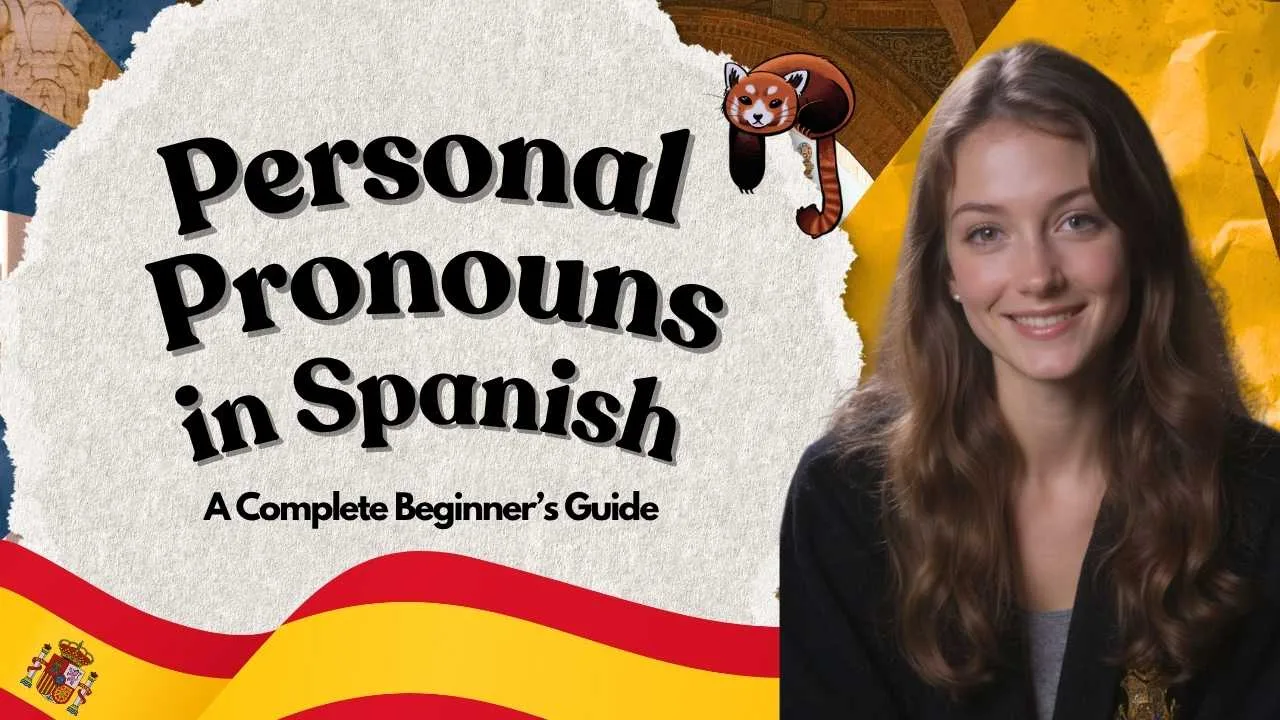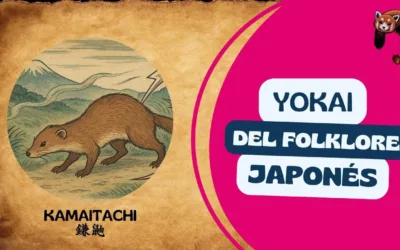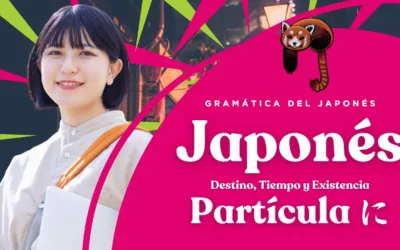🌎 Personal Pronouns in Spanish: A Complete Beginner’s Guide
Learning personal pronouns in Spanish is one of the most important steps when starting your Spanish journey. Pronouns are small words, but they carry a lot of meaning—they help us talk about people without repeating names all the time.
If you’ve ever said I am happy or She is a teacher, you’ve already used personal pronouns! In Spanish, these words work very similarly, but with a few interesting differences you’ll love discovering.
Let’s dive into the basics and learn how to use Spanish personal pronouns like a native speaker. 🇪🇸
🔤 What Are Personal Pronouns in Spanish?
Personal pronouns are words used to replace nouns and refer to people or things. In English, they include I, you, he, she, it, we, and they.
In Spanish, personal pronouns can also indicate gender (masculine or feminine) and formality (when you’re speaking respectfully).
Here’s a complete chart comparing Spanish personal pronouns with their English equivalents:
⚠️ Attention: The speaker icon 🔊 to listen to the words or phrases works best in Google Chrome, Microsoft Edge, or Safari. In other browsers, the Royal Language audio service may not be available or may sound different.
| Spanish Pronoun | English Equivalent | Number | Formality | Notes |
|---|---|---|---|---|
| yo 🔊 | I | Singular | Informal | Used to talk about yourself. |
| tú 🔊 | you | Singular | Informal | Used with friends, family, or peers. |
| usted 🔊 | you | Singular | Formal | Used to show respect or politeness. |
| él 🔊 | he | Singular | — | Refers to a male person. |
| ella 🔊 | she | Singular | — | Refers to a female person. |
| nosotros 🔊 | we | Plural | — | Used when the group includes males or is mixed. |
| nosotras 🔊 | we | Plural | — | Used when the group is all female. |
| vosotros 🔊 | you all | Plural | Informal | Common in Spain. Used with friends or family. |
| vosotras 🔊 | you all | Plural | Informal | All-female version of vosotros (Spain). |
| ustedes 🔊 | you all | Plural | Formal (in Spain), both formal and informal in Latin America | Used when addressing more than one person. |
| ellos 🔊 | they | Plural | — | Refers to a group of males or a mixed group. |
| ellas 🔊 | they | Plural | — | Refers to a group of females. |
🧠 How to Use Personal Pronouns in Spanish
In English, we always use pronouns before the verb:
✅ I speak English.
In Spanish, pronouns are also placed before the verb. The pronouns in Spanish are often dropped, because the verb itself tells you who is doing the action:
✅ (Yo) hablo español. → I speak Spanish.
Here, yo is optional. The ending -o in hablo already means “I”.
So, Spanish speakers usually omit pronouns unless they want to emphasize something:
Yo hablo inglés, pero ella habla francés.
“I speak English, but she speaks French.”
🌎 Regional Differences You Should Know
In Spain, people use vosotros/vosotras to mean you all (informal), while ustedes is reserved for formal situations.
In Latin America, vosotros/vosotras are rarely used. Instead, ustedes replaces them in both formal and informal contexts.
So in Mexico, Argentina, or Colombia, you’ll hear:
¿Ustedes hablan inglés? → “Do you all speak English?”
But in Spain, you’d say:
¿Vosotros habláis inglés?
💬 Practice Makes Perfect
To master the Spanish personal pronouns, try these tips:
-
🎧 Listen to native speakers and note how often they omit pronouns.
-
✍️ Write short sentences about your daily life: Yo estudio, Ella trabaja, Nosotros vivimos en México.
-
🗣️ Practice aloud using both formal and informal versions (tú vs. usted).
The more you use them, the more natural they’ll feel!
🌟 Why Learning Pronouns Matters
Understanding Spanish pronouns will make your conversations sound more natural and confident. They’re the foundation for verbs, questions, and descriptions.
Once you master pronouns, you’ll find it easier to learn tenses, conjugations, and even regional expressions.
Learning them is like building the first floor of your Spanish language house — strong, solid, and ready for growth!
🎯 Final Thoughts
Whether you’re studying for fun, travel, or connection, mastering personal pronouns in Spanish helps you express yourself clearly.
Remember: Spanish is not just about grammar — it’s about people, stories, and culture. Knowing how to say I, you, we, or they connects you to millions of Spanish speakers around the world.
So keep practicing, and soon you’ll say ¡Yo hablo español! with pride. 🇪🇸✨
🏷️ Tags (Keywords)
personal pronouns in spanish, personal pronouns in spanish and english, personal pronouns in spanish worksheet, personal pronouns in spanish quiz, personal pronouns in spanish for kids, personal pronouns in spanish translation, personal pronouns in spanish exercises, personal pronouns spanish chart, personal pronouns in spanish examples, personal pronouns in spanish singular and plural, Subject pronouns in Spanish, Subject pronouns en español y inglés, Personal pronouns wordwall, Object pronouns en español, write the personal pronouns in spanish wordwall, when to use personal pronouns in spanish, subject personal pronouns in spanish, all personal pronouns in spanish, how to say personal pronouns in spanish, what are the male and female personal pronouns in spanish, object personal pronouns in spanish, 6 personal pronouns in spanish, 10 personal pronouns in spanish, learn spanish personal pronouns wordwall, all spanish personal pronouns, spanish personal pronouns exercises, spanish personal pronouns worksheet, personal pronouns spanish chart, spanish personal pronouns worksheet pdf, spanish personal pronouns song, spanish personal pronouns game
Estudia Con Nosotros de Manera Online
Revista Virtual
La Partícula へ (e) en Idioma Japonés: Dirección y Movimiento
🏯 La Partícula へ (e) en Idioma Japonés: Dirección y Movimiento La partícula へ (e) 🔊 (aunque se escribe con el hiragana へ, se pronuncia e) se utiliza principalmente para indicar dirección o destino, muy similar a la partícula に (ni). Sin embargo, su función no es...
Kamaitachi – Yokai Japonés – Historias, Leyendas, Folklore y Cultura
Kamaitachi – La comadreja de la hoz que corta con el viento El Kamaitachi es uno de esos yokai que parecen residuales: casi imperceptibles, veloces, invisibles… y que dejan su marca de forma misteriosa. Su mito mezcla lo natural —el viento, las doninas, el frío— con...
La Partícula に (ni) en Idioma Japonés: Destino, Tiempo y Existencia
🏯 La partícula に (ni) en japonés: destino, tiempo y existencia La partícula に (ni) 🔊 es una de las más frecuentes en japonés y, al mismo tiempo, una de las que más dudas genera entre los estudiantes.Esto se debe a que puede tener varios significados según el contexto,...
Mantente Informado de las Últimas Noticias y Actualizaciones
Inscríbete a Nuestros Cursos Online
C️oreano - ️Francés -️ Japonés
Inglés -️ Italiano - Alemán - Chino
Ruso - Portugués - Árabe - Noruego
Únete a Nuestro Newsletter
Enteráte de nuestros nuevos artículos sobre lengua y cultura.
Síguenos
En totdas nuestras redes sociales






